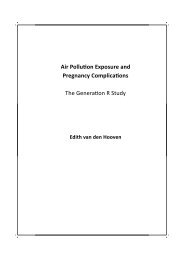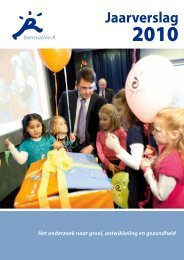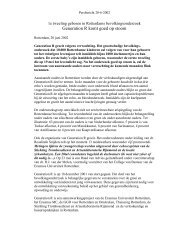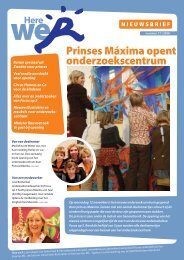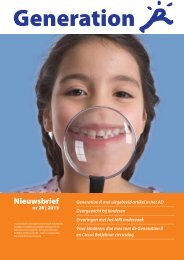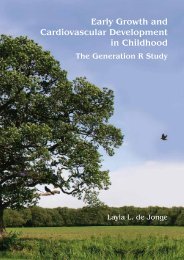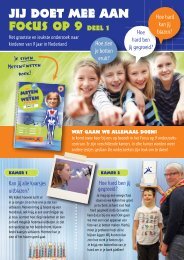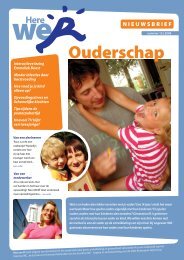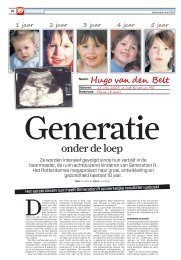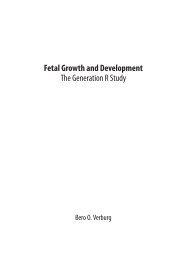Parents and infants: determinants of attachment in a ... - Generation R
Parents and infants: determinants of attachment in a ... - Generation R
Parents and infants: determinants of attachment in a ... - Generation R
Create successful ePaper yourself
Turn your PDF publications into a flip-book with our unique Google optimized e-Paper software.
Attachment, depression, <strong>and</strong> cortisol: Deviant patterns <strong>in</strong> <strong>in</strong>secure-resistant <strong>and</strong> disorganized <strong><strong>in</strong>fants</strong><br />
Attachment <strong>and</strong> Cortisol Diurnal Rhythm<br />
The excretion <strong>of</strong> cortisol did show the expected diurnal pattern, with high<br />
levels at awak<strong>in</strong>g <strong>and</strong> a decl<strong>in</strong>e throughout the day. In the cortisol diurnal<br />
curves <strong>of</strong> the <strong><strong>in</strong>fants</strong>, most children showed no morn<strong>in</strong>g rise. We performed<br />
an ANCOVA to test the effect <strong>of</strong> <strong>attachment</strong> quality on the cortisol measures<br />
AUC G , slope, <strong>and</strong> CAR. Aga<strong>in</strong>, <strong>attachment</strong> security <strong>and</strong> <strong>attachment</strong> disorganization<br />
were entered as factors, <strong>and</strong> maternal depression was <strong>in</strong>cluded as<br />
a covariate. A ma<strong>in</strong> effect <strong>of</strong> disorganization was found for slope (F [1, 213]<br />
= 3.99, p < .01, η 2 = .03), <strong>in</strong>dicat<strong>in</strong>g a more fl attened slope for children with<br />
a disorganized <strong>attachment</strong> classifi cation (slope disorganized group = -0.84,<br />
SE = 0.11; slope non-disorganized group = -1.16, SE = 0.06; Figure 3). Also,<br />
for AUC G , an <strong>in</strong>teraction effect was found for <strong>attachment</strong> security <strong>and</strong> disorganization,<br />
(F [2, 195] = 3.34, p = .04, η 2 = .03).<br />
Disorganized-secure <strong><strong>in</strong>fants</strong> showed higher cortisol excretion (AUC G =<br />
10.49, SE = 1.27) than disorganized-<strong>in</strong>secure <strong><strong>in</strong>fants</strong> (AUC G = 7.48, SE =<br />
1.27 for children with a secondary avoidant classifi cation, <strong>and</strong> AUC G = 7.66,<br />
SE = 1.05 for children with a secondary resistant classifi cation). Compared<br />
to the non-disorganized group, cortisol excretion <strong>in</strong> the disorganized group<br />
was more divergent, dependent on the second classifi cation. No effects were<br />
found for CAR or maternal lifetime depression.<br />
Figure 3. No differences <strong>in</strong> cortisol diurnal rhythm for secure, <strong>in</strong>secure-avoidant,<br />
<strong>and</strong> <strong>in</strong>secure-resistant children; fl attened slope for disorganized children compared<br />
to non-disorganized children<br />
<br />
97



